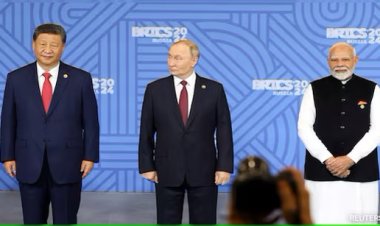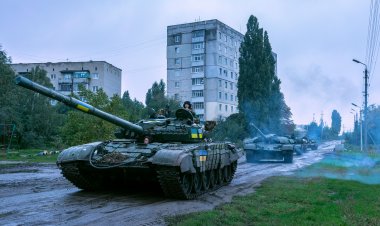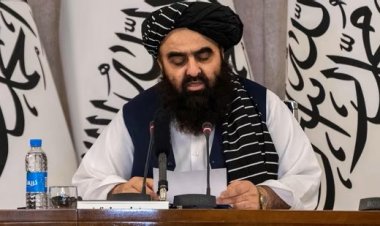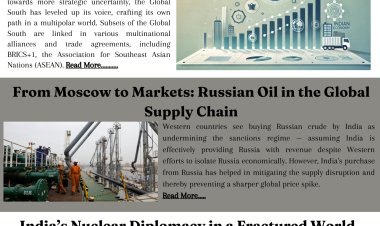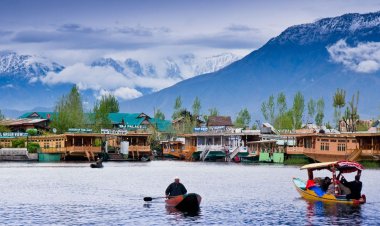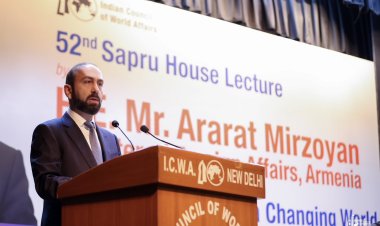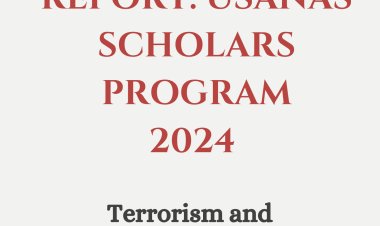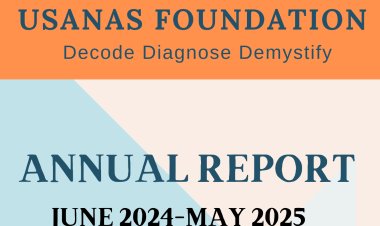Why India should prefer cautious engagement with NATO
The article analyses how India should engage with NATO .
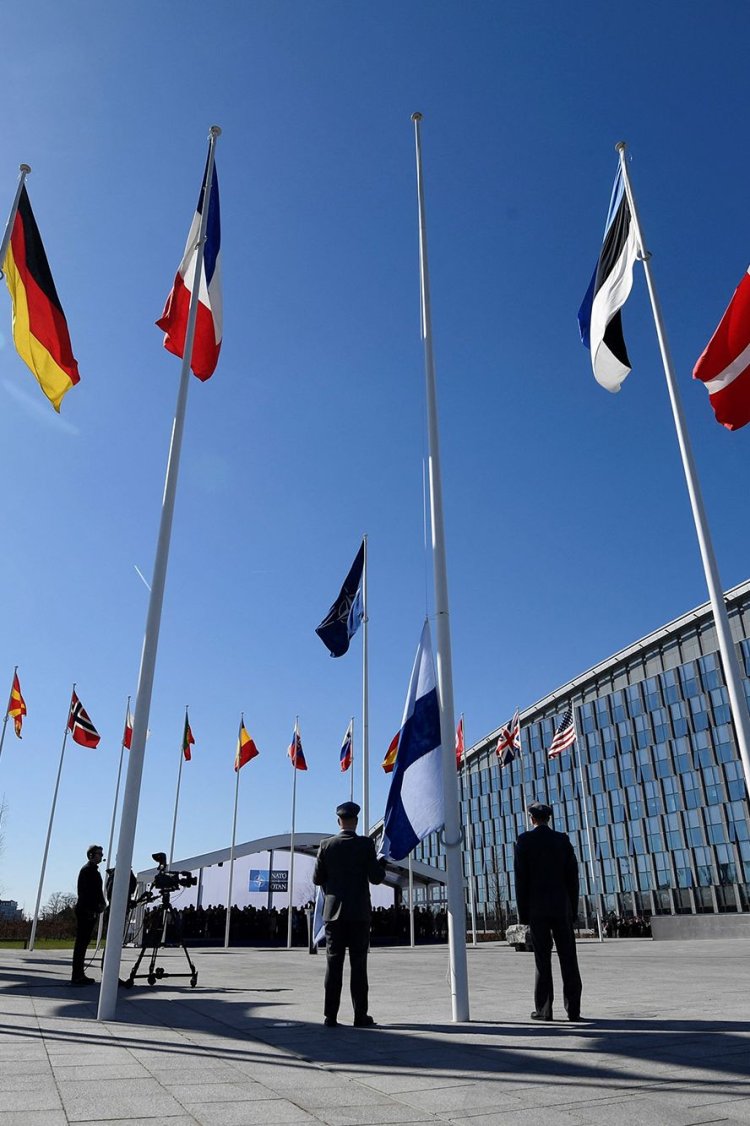
Analysis
By Abhinav Pandya
In a surprising move, though not entirely unexpected, the US permanent representative to NATO Julianne Smith said that NATO’s doors are open, if India is interested. Her statement has generated a popular debate on whether India is joining NATO.
Also, it has disturbed several geopolitical heavy weights. However, it must be made clear that Juliaane has categorically stated that NATO is looking at engaging India more, given the latter’s interest, and not precisely at India becoming a formal member. In fact, in her statement, she has made it explicitly clear that at the moment, NATO is not considering the prospects of becoming a broader global military alliance.
The discussions about India’s enhanced engagement with NATO have been doing rounds for quite some time. In July 2022, US Congressman of Indian origin, Ro Khanna said that addition of India as a sixth nation in the NATO plus on the lines of Australia, New Zealand, Japan, Israel and South Korea will “move Delhi towards Defense Security Alignment with the United States, strengthening the growing defense partnership between the two countries. This was in the wake of the approval of an amendment to the National Defence Authorization Act by the US’ House of Representatives, proposing the deepening of the India-US defense ties.”
Geopolitically speaking, the need for strengthening India’s engagement with NATO is in tune with the recent developments in world politics particularly the rise of China, its increased expansionism in the maritime and land domains, global influence operations and the meteoric rise in its economic heft and Russia’s revivalist war-like engagements. However, the issue is not as simple as it may appear because of the differing perceptions in Washington DC and New Delhi on this issue.
Historical background
In the cold war days, the US was not comfortable with India’s non-alignment approach and aversion to join the power blocs. Overtime, despite the façade of non-alignment, India came to be seen as closely aligned to the USSR. The friction between the US and India also became deeper because of the US support to Pakistan on the Kashmir issue and in the 1971 war. Much to India’s chagrin, Pakistan joined the US-led SEATO in 1954 and signed the Baghdad pact in 1955, enabling it acquire the high-tech weapons from the US which it subsequently used against India in 1965 and 1971.
Though the US helped India in the India-China war of 1962, the relations between Delhi and Washington could not make much headway. After the Soviet disintegration, India, having lost its robust geopolitical support base, felt a sense of isolation. The sense of isolation and strategic unease was also strengthened by its mounting internal security challenges in the form of Pakistan-supported armed insurgency in Kashmir and Punjab.
This led New Delhi to find new friends and India started reaching out to Israel, US and South East Asia. Also, there was a ray of hope because after the Soviet withdrawal from Afghanistan in 1988, the US was not much interested in Pakistan. However, once again, India-US relations strained after India’s nuclear test, as a result of the US sanctions against India. Later, after 9/11, the US co-opted Pakistan as its foremost ally in the war against terror, leading it to play softball with Musharraf on the issue of Pakistan’s support to terrorist groups in Kashmir. It did not go down well with India and relations suffered from mutual distrust.
The ultimate breakthrough came in 2008 after the civilian nuclear deal. After the 2008 civilian nuclear deal, one witnesses the continuous process of strengthening of the strategic ties between the two countries, despite some occasional frictions.
The horns of dilemma
Geopolitics and strategic dilemmas are like two sides of the same coin, and when it comes to a civilized state as layered in its diplomatic sub-conscious as India, such dilemmas rule the roost.
The votaries of India joining NATO argue that if India joins NATO, it will get the US military support against China and an easier access to high-tech US weapons and crucial intelligence.
Over the last decade, India-China ties have worsened due to frequent Chinese incursions in Depsang, Doklam, Galwan in the Ladakh border region and most recently in Tawang in North Eastern state of Arunachal Pradesh, claimed by China as its territory.
Diplomatically, Chinese influence operations and strategic encircling of India in South Asia have raised India’s insecurities. Also, it is felt that deeper India-US engagement is a most logical phenomenon in geopolitics because of the faith in common values such as democracy, freedom of expression, freedom of the global commons and the liberal world order.
India’s strategic establishment feels that China may think of embarking upon a major military adventure on the India-China border. Its motivations range from cutting India to its size, preventing it from closely aligning with the US and boosting its image of global power. It is quite likely that Chinese believe that any adventure in Taiwan straits may backfire due to its high optics as it will be a direct challenge to the US.
However, on the Indian border, they assume that India will be left alone to defend itself and the US will not lend a decisive support because of India’s ambivalence on the issues and concerns relevant to the US such as the Ukraine war.
China’s aggressive intelligence gathering on Arunachal Pradesh in recent times, particularly about the prospects of the US supporting India militarily in the Arunachal, amply suggest that there is something up the dragon’s sleeves.
However, there are strong voices in India’s power corridors who are either against India joining NATO or at least highly circumspect about it. They argue that in Arunachal Pradesh and the other border areas with China, the Indian army is in full control of the Himalayan terrain and can effectively counter the Chinese advance.
India needs advanced technology in defence and better quality intelligence from the US, which if the US is sincere about deeper engagement with India, is also possible outside the purview of formally joining NATO.
In their perception, India’s formal association with NATO will be a nemesis of its robust strategic relationship with Russia which goes back to the cold war days. Though Russia’s share of Indian arms import has decreased from 69 per cent between 2012-17 to 46 per cent between 2017-21, it continues to be the largest weapons supplier to India.
India is dependent on Russia for the parts of its entire old armaments. Delhi fears that formally associating with NATO will further push Russia into China’s fold, India’s number one adversary. However, it is pertinent to mention that even deepening the engagement with the NATO without formally joining it, is equally likely to draw a rift between India and Russia and drift Moscow towards China.
Particularly, after the Ukraine war and the US stance in that, Russians have very limited choices and their alignment with China appears like an inevitable reality and a logical culmination of the sharpening US-Russia rivalry post-2008.
Perhaps New Delhi realises the inevitability of the emergence of the Russia-China axis in the emerging world order. Inhibitions and reluctance for deeper engagement with the US in public emanates from India’s desire to guard its strategic autonomy, explore a modus vivendi to navigate through the emerging rival power blocs and find a productive and relevant space in this complex maze of geopolitics.
Also, though difficult to give credence to at this stage, Indian policy planners might also be looking at exploiting the fault lines between the Chinese and Russians as there is already a history of rivalry between the two civilizational states. Most recently, in 1969, China and Russia fought over a boundary dispute. Though the boundary disputes are more or less resolved, Russia is much weaker and desperately needs China, the two states vie for geostrategic influence in Central Asia and Far East, and Russians are not very comfortable with the burgeoning Chinese geo-economic footprint in the Central Asia, its traditional stronghold.
Also, Indian strategic circles are apprehensive of the US motives. They fear that the US intends to pit India against China, use it as a bulwark, and contain the rising China. This may be a well-calculated strategy as after the Chinese decline, India is likely to be the main strategic contender to the US. If China and India are embroiled in a long-standing military and economic conflict, there will be no single victor. Both will end up with major losses, shattered morale and massive economic reverses.
China with its dictatorial Xi-led communist regime and diplomatic isolation due to its increasingly expansionist tendencies may not sustain long enough with its repressive machinery and may face an internal chaos-like situation in the near or distant future; however, India with its strong civilisational roots, robust democracy and economy is likely to be global power in the long run.
However, New Delhi realises the power disparity, particularly in the economic domain and technology, and is in no mood to escalate conflict with China. PM Modi wants to focus on the internal security challenges of Islamic radicalization, infrastructure and economic development and governance reforms for the next few years, to prepare a strong edifice for the future economic growth and diplomatic heft.
There are apprehensions about the US supporting India in the event of a war with China. Some of these fears emanate from recent events such as the declining US influence in West Asia and the US withdrawal from Afghanistan which is seen in India as a betrayal of Afghans. The US response in the Ukraine crisis also does not evoke much confidence in India and the US support is seen as insufficient and intended to serve its own ends instead of any genuine intent to help Ukraine against Russia.
Ukraine’s massive destruction is perceived as a result of over-reliance on the US and an ideal case of irrational decision-making to be avoided at all costs. Also, anti-India propaganda campaign by the US-based human rights institutions, advocacy groups, Islamist and Khalistani entities makes India’s strategic czars extremely uncomfortable and a significant section among them is not averse to perceiving these acts as having some latent support in the official circles and the deep-state.
The above-mentioned apprehensions are further accentuated by NATO’s internal frictions and faultlines, amply reflected in the statement by the French president that Europe should not be a ‘vassal’ in US-China conflict. The simmering divisions over the Russia-Ukraine war and Washington’s apathy towards quad and Indo-Pacific are also making New Delhi sceptical about the future of NATO and the US intentions. Last but not least, Chinese penetration in the US state institutions is also a matter of concern for India.
New normals and the way ahead
Having discussed the pros and cons of the idea of India’s deeper engagement with NATO, it can be argued that the idea of India joining NATO is fundamentally rooted in robust consensus on the need for deeper, stronger and comprehensive engagement between the US and India. The way this broad consensus has strengthened now, is unprecedented. It is already manifested in the India-US foundational agreements such as the civilian nuclear deal, GSOMIA (2002), LEMOA (2016) and BECA (2020). Even the staunchest critics of the US in India’s strategic establishment find it difficult to hold arguments against this fundamental need for enhanced India-US engagement.
At this stage, any formal association with NATO may backfire for India, for the reasons mentioned above. India’s strategic neutrality, likely to add immense moral fibre to Delhi’s credibility as a future possible interlocutor in the Russia-Ukraine crisis, will provide crucial diplomatic dividends to the US and world peace.
Also, if there is even a remote possibility of Russo-Chinese fault-lines rupturing the alliance, then India’s historic ties with Russia and neutrality can facilitate that process, which in any case need not be scuttled by Delhi’s premature alliance with NATO.
However, as the global rifts and fault lines sharpen and manifest in the form of concrete power blocs, it will be increasingly difficult for India to maintain its neutrality. If China continues its expansionism and subterfuge, and the China-Russia axis becomes stronger, then India-US strategic partnership is bound to grow and strengthen as a logical and natural development. Hence, there is hardly any need to rush into things.
Also, as regards India, the US establishment needs to explore the workings of India’s strategic sub-conscious mind. Strictly transactional approach does not align well with India’s cultural and civilizational ethos. New Delhi prefers an equal relationship based on values, trust and a sensible and nuanced understanding of each other’s concerns, compulsions and world views emanating from their cultures, politics and history.
Disclaimer: This paper is the author's individual scholastic contribution and does not necessarily reflect the organization's viewpoint. The article was originally published by Firstpost.




